Design at scale with nTop Automate
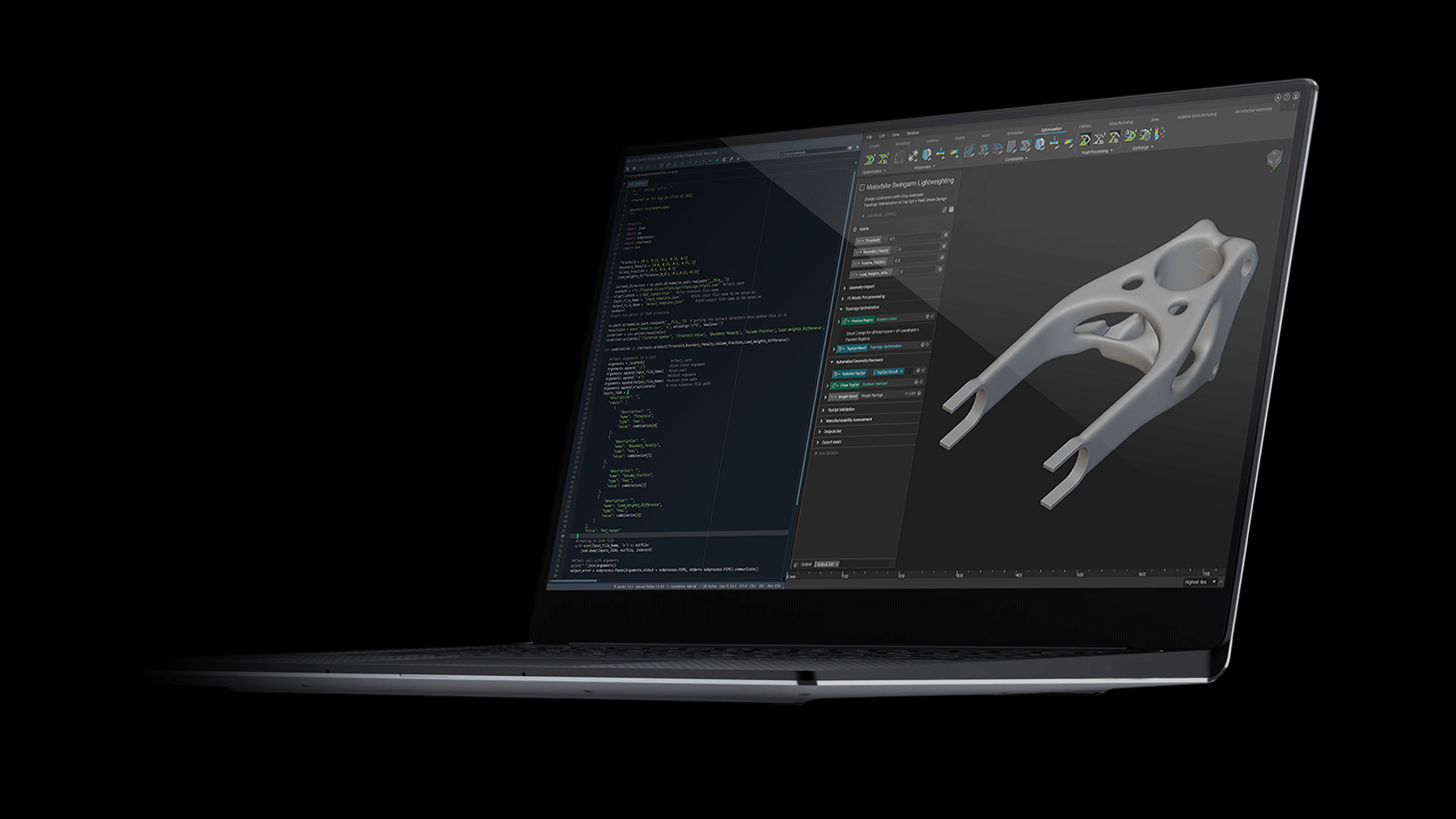
Written by Daeho Hong | Product Manager (Integrations) at nTop
Published on June 28, 2023
Applications
- General
- Mass customization
Key Software Capabilities
- Design automation
- Integrations
Advances in additive manufacturing and other digital processes have drastically reduced the cost of customized products and small-batch production.
Both of these applications require creating a vast number of one-off designs in a very short time, precious time that a design engineer would typically have to spend. Moreover, increasing complexity and product development targets push engineers to evaluate a broader range of design candidates to identify the best-performing solutions.
To empower our users to scale their design processes, we have created nTop Automate, which enables you to execute nTop workflows through a programmatic environment. In this article, we explore some of the core use cases of nTop Automate.
What is nTop Automate?
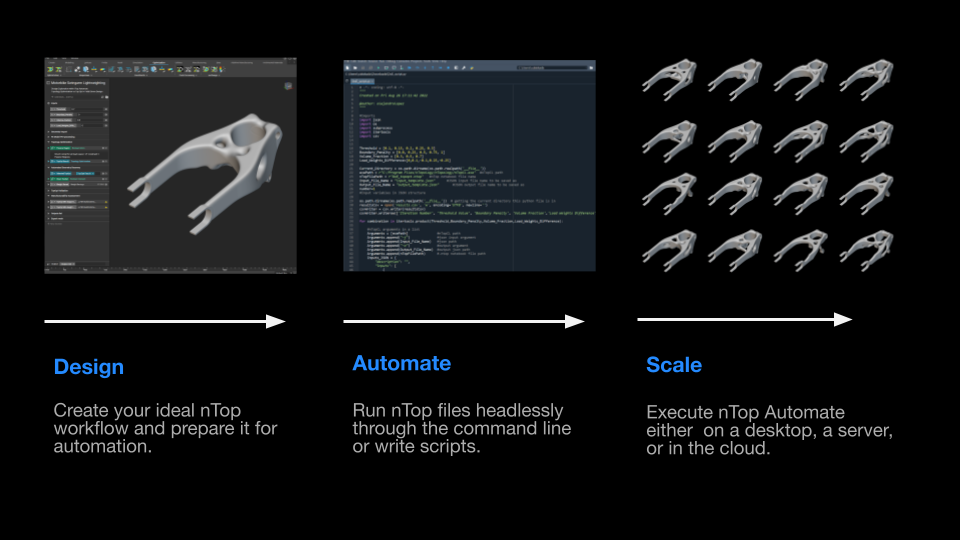
Process overview of creating and scaling a design automation process with nTop Automate
nTop Automate is nTop’s command line interface (CLI). With nTop Automate, you can headlessly execute nTop workflows via the command line or call them programmatically through scripts.
The steps to create and scale a design automation process with nTop Automate are as follows:
- First, you create a reusable design process using nTop’s graphic user interface.
- Then, you prepare the workflow for automation by defining its inputs and outputs.
- Finally, you can headlessly rerun the design process using new inputs through the command line or scripts.
nTop Automate enables you to scale your design automation processes and multiply your engineers’ impact by giving them the ability to run nTop workflows in a programmatic environment. It takes advantage of nTop’s implicit modeling engine and enables you to develop design processes with the confidence that they will not break even when their inputs drastically change.
Since the deployment of nTop Automate is identical whether running it on a desktop, a server, or the cloud, it enables you to leverage the available computational resources.
Compared to other design automation solutions, it requires minimal programming skills or developer resources, as the design engineer only needs to make changes to the nTop file to update a design automation workflow.
Because of these core benefits, nTop Automate is a valuable tool for batch processing, design exploration, and mass customization.
Batch Processing with nTop Automate
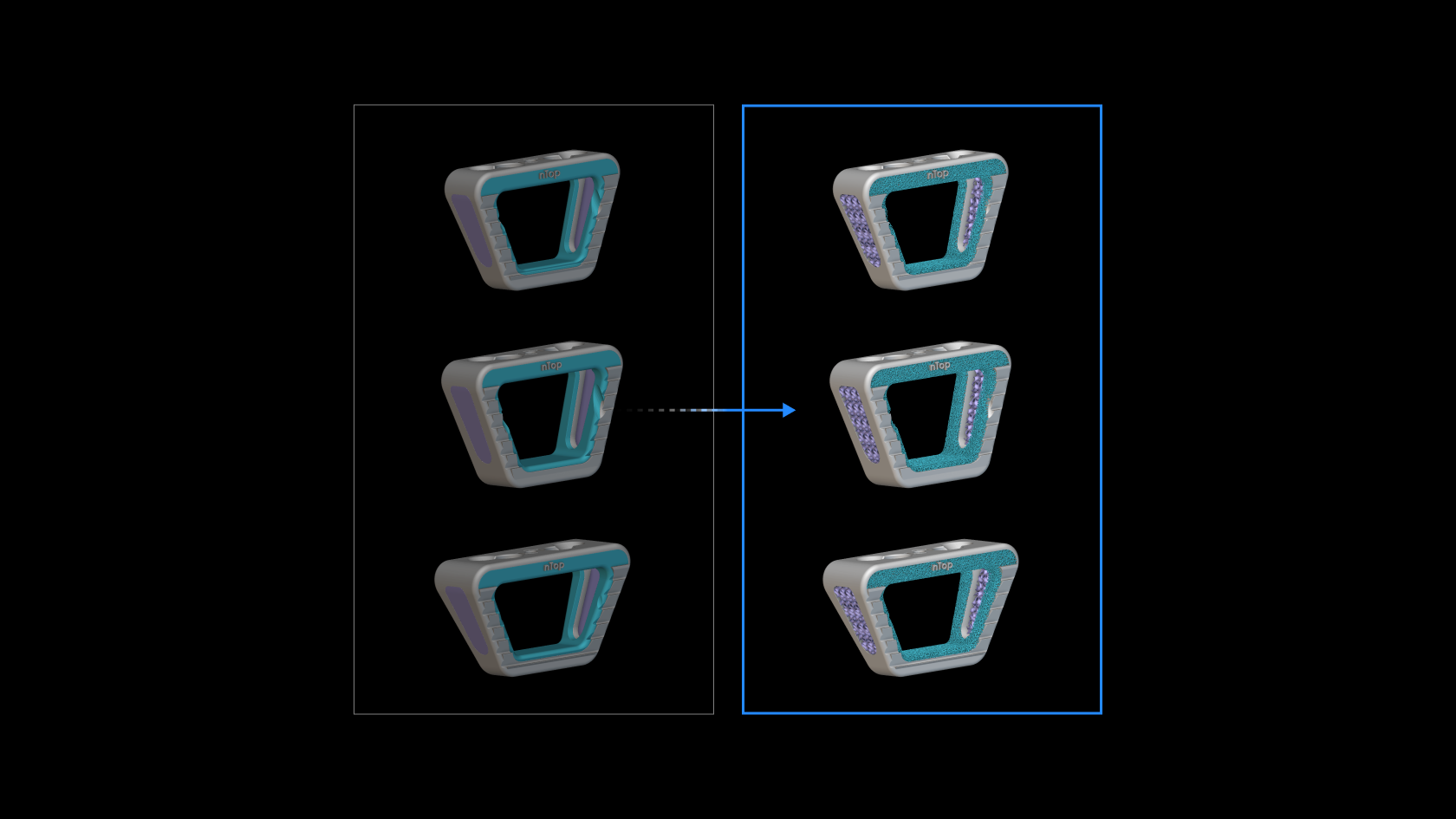
Batch processing with nTop automate example. The same nTop workflow is applied to a product family of similar parts using a script to modify them all at once.
Batch processing with nTop Automate allows you to modify a large number of similar parts all at once using scripts.
This way, you can automate repetitive tasks, such as applying a serial number to multiple parts and automatically generating designs for large product families, making it more manageable to make design changes or even offload heavy computations, like meshing or simulations, to a server or the cloud.
Case study: SI-BONE
SI-BONE developed and validated a novel osseointegrative lattice structure with nTop. With nTop Automate, they applied it to a whole product family with 70+ unique part configurations overnight, saving engineering design time while ensuring traceability. Learn more.
Design Exploration with nTop Automate
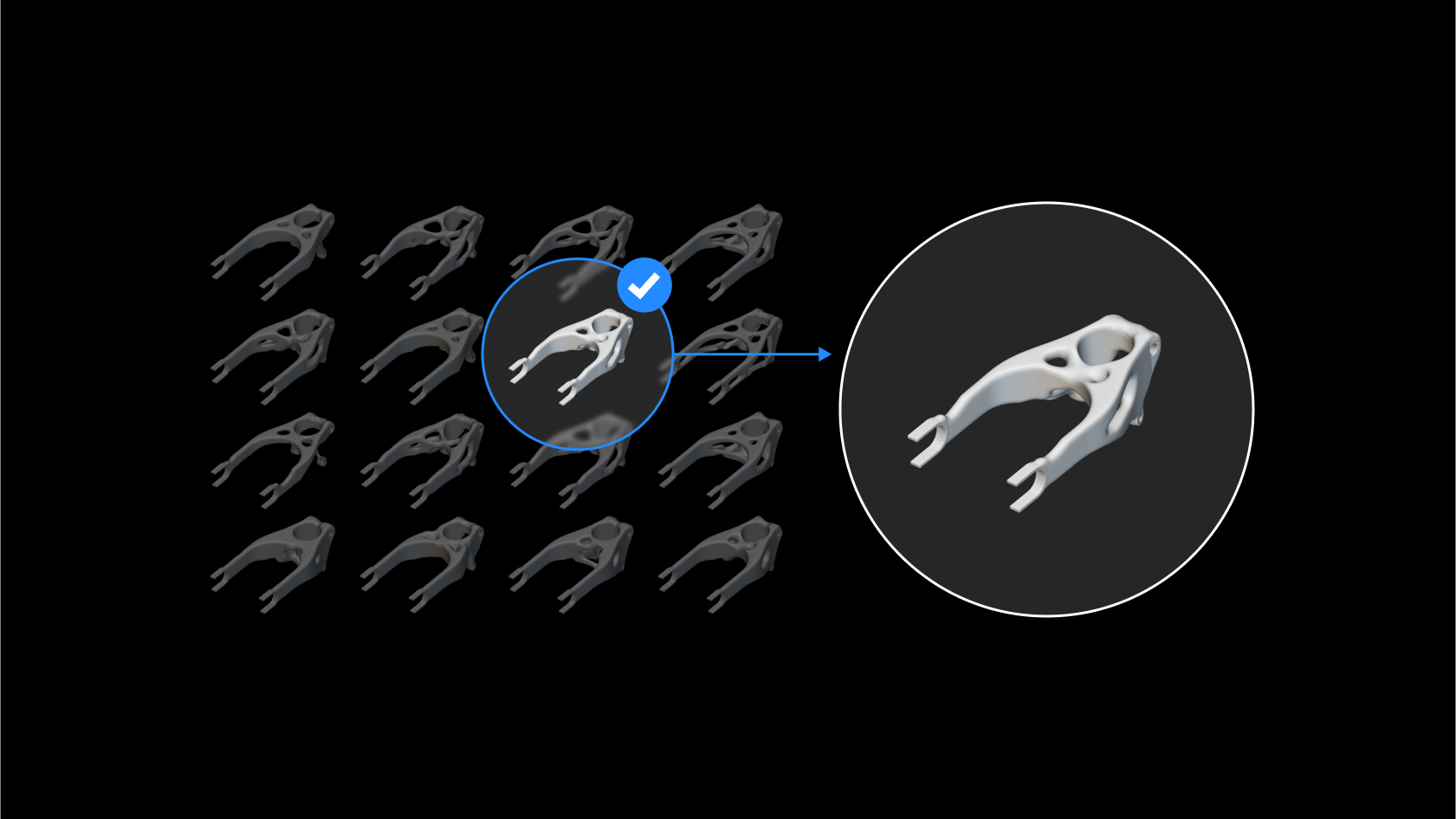
Design exploration with nTop Automate example. The process first generates multiple design variations and then selects the best performing candidate based on your requirements.
nTop Automate enables you to explore a wider design space faster by automating design generation and evaluation.
Instead of manually changing each design parameter, you can systematically explore the design space by running computational Design of Experiments (DoEs) to identify the highest-performing design candidate. Additionally, nTop Automate enables you to create integrations and software connections between nTop and other engineering software tools.
There are three common ways to approach design exploration and parameter optimization with nTop Automate:
- Using scripts, you can create DoEs that generate design candidates based on different input parameters and use nTop’s simulation tools and other utilities to evaluate their performance.
- By integrating nTop into Multidisciplinary Design Optimization (MDO) tools, like ModeFrontier, ModelCenter, and Process Composer, you can run detailed DoEs that assess your designs against multiphysics design objectives.
- By creating custom software connections with your CAD, CAE, or other software tools, you can support your product development process and enable your team to apply agile hardware development practices.
Case study: OCADO Technology
Ocado used nTop to apply an additive-first approach and agile product development practices inspired by the world of software development. The OCADO team generated hundreds of lightweight design candidates in every sprint to meet their aggressive timelines and weight reduction targets for the 600 Series grocery fulfillment bot.
nTop Automate enabled novel innovation techniques and automated optimization studies. Ocado built connections between nTop and CAD design tools and created automated workflows at scale. Learn more.
Mass Customization with nTop Automate
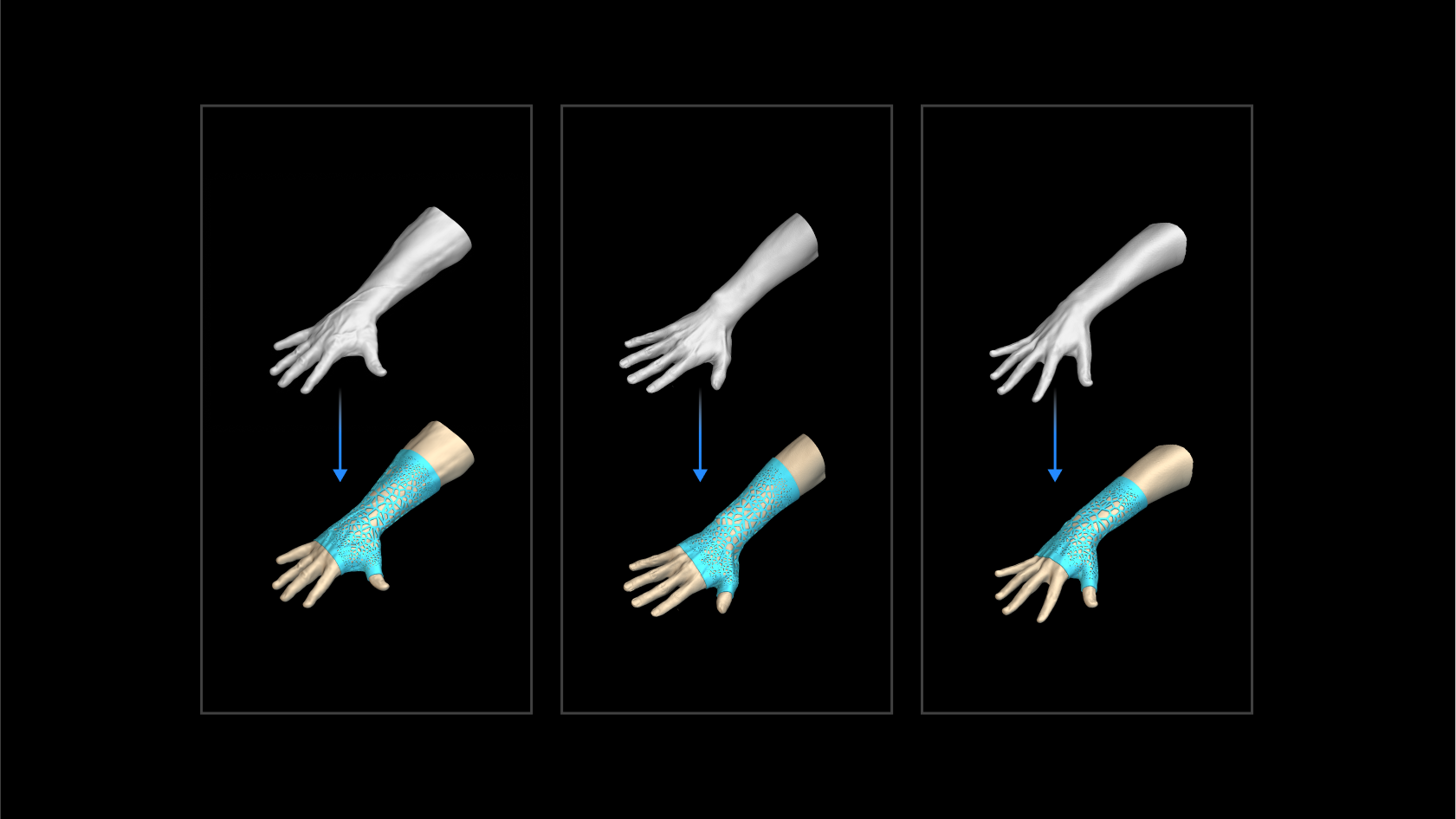
Mass customization with nTop Automate example. The design process generates a one-off design based on new inputs when a new order is placed.
nTop Automate gives you a straightforward path to deploying your mass customization processes to a production environment.
By combining nTop's unbreakable geometry with the software's ability to receive input from many different data sources, you can first create reliable design processes that automate design generation of personalized products. Then, you can use nTop Automate to run these workflows in the cloud and connect them to your app to generate custom designs on demand.
Case study: LightForce Orthodontics
LightForce Orthodontics used nTop's design automation capabilities to reduce design time 60-fold. Using nTop Automate, they automatically generate each individual bracket based on a patient's 3D scan uploaded by the orthodontist to their web app. Their patient-specific braces result in 33% faster installation and more effective patient outcomes. Learn more.
nTop Automate runs on Windows and Linux
nTop Automate is available on both Windows and Linux.
Being compatible with both operating systems gives you the flexibility to develop design automation workflows in the environment you are most familiar with and then use all available on-premise High-Performance Computing (HPC) resources or unlock more economical cloud computing.
For example, you can create design workflows in nTop’s graphic interface and test your design automation processes on Windows before deploying them to a Linux on-premise or cloud server to scale.
Key takeaways
- nTop Automate enables you to execute nTop workflows through a programmatic environment without requiring extensive developer skills.
- Batch processing, design exploration, and mass customization are the most valuable use cases of nTop Automate.
- nTop Automate is available on both Windows and Linux, allowing you to use all available HPC resources and unlocking more economical cloud computing.

Daeho Hong
Product Manager (Integrations) at nTop




